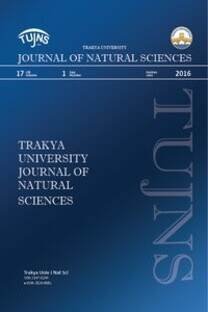Polimer destekli organokalayhidrür bileşiklerinin yapımı ve halka kapanma reaksiyonlarında kullanımı
Bu çalışmanın amacı geniş bir kullanım alanı olan kalay hidrürlerin reaksiyon sonrası saflaştırma problemlerini minumuma indirgemek için bir polimere bağlayarak kullanmaktır. İlk olarak MA 280 000 olan lineer polistiren ile çalışılmış, bu polimere önce brom bağlanmış, ardından bu bromun farklı alkil grupları ile yer değiştirilmesi denenmiştir. Lineer polimerin n-BuLi ile kullanılması sorun olduğundan kullanımından vazgeçilmiştir. Toz halindeki çapraz bağlı polimerlerden de aynı nedenle vazgeçilerek ticari olarak satılan XAD4 tipi boncuk 20-50 mesh büyüklüğündeki polimerler ile çalışmalar yapılmıştır. Amacımıza uygun çapraz bağlı polimerler süspansiyon polimerleşmesi ile de elde edilerek kullanılmıştır. Yapılan deneylerle çok değişik boyutlarda ve çapraz bağlı yapıya sahip polimerler elde edilmiş ama bu polimerler ile de yapılan çalışmalarda polimer destekli kalay hidrür bileşiği oluşmamıştır. Amacımızı gerçekleştirmek için çalışmalarda monomerlerden başlanılmasına karar verilmiş, bunun için ilk olarak DVB ile Bu2SnHCl reaksiyona sokularak, sonraki aşamada polimerleşme gerçekleştirilmiştir. Bu polimerleşme; süspansiyonal, çözelti polimerleşmesi ve kütle polimerleşmesi olarak da yapılmıştır. Bunlardan süspansiyonal polimerleşmeden sonuç alınamadığı için vazgeçilmiş, diğer iki çalışmadan ise istenilen sonuç alınmıştır. Elde edilen polimer hem LiA1H4 hemde DIBAL-H ile indirgenmiş, LiALH4 ile daha iyi sonuç alınmıştır. Amaçlanan polimer elde edilince aktifliğini incelemek için oktil bromür ile reaksiyona sokulmuş ve oktil bromürün indirgendiği gaz kromatografısi, TLC ve IR spektrumu ile ispatlanmıştır.
Synthesis of polymer-supported organotinhydride reagents and their use in cyclization reactions
The purpose of this study is to prepare polymer-supported organotin hydrides, which have a wide range of use, so that, purification problems may be eliminated. First of all, linear polystyrene (MA 280 000) was used in our studies, initially, bromine was attached, followed by some different alkyl groups. We stopped working with this polymer due to problematic use of n- BuLi, and then it was done with the powdered cross-linked resins for the same reason. Instead, commercially available XAD4 bead resin (20-50 mesh), which can easily be swollen in appropriate solvents, became the one worked with. We tried to synthesize the desired resin, which was appropriate for our purpose, by suspension polymerization with different degree of cross-linking and with different "mesh" size. We classified synthesized resins using different size of the sieves and worked with these resins. The studies that have been done with these resins have also not helped us to get the polymer-supported organotin compounds. As a result, tin compound was connected to monomer by reacting DVB with Bu2SnHCl, followed by the polymerization which has been performed via suspension polymerization, solution polymerization, and bulk polymerization. Suspension polymerization was dropped because it didn't give expected results. Yet, other two studies that have been done via solution and bulk polymerization did give expected results. Obtained resins were reduced both with LiA1H4 and with DIBAL-H. The results obtained from the reduction reactions with LiA1H4 were more satisfactory.After synthesizing the desired reagent, we test the activity by using 1 -bromooctane and monitored the reaction with TLC, GC and IR proofing the reduction of 1-bromooctane to octane
___
- ISSN: 1302-647X
- Yayın Aralığı: Yıllık
- Başlangıç: 2018
- Yayıncı: -
Sayıdaki Diğer Makaleler
Sıvı nedir? maddenin durumlarını anlama
Polimer destekli organokalayhidrür bileşiklerinin yapımı ve halka kapanma reaksiyonlarında kullanımı
TEMİNE ŞABUDAK, Mustafa RIDVANLAR, Ülkü OYMAN
Alkanolamidlerin sentezi ve özellikleri
Peptide synthesis by stabilized trypsin
Yeşim YEŞİLOĞLU, Ayten SAĞIROĞLU
Tripsin katalizörlüğündeki peptid sentezlerinin kromatografik incelemesi
